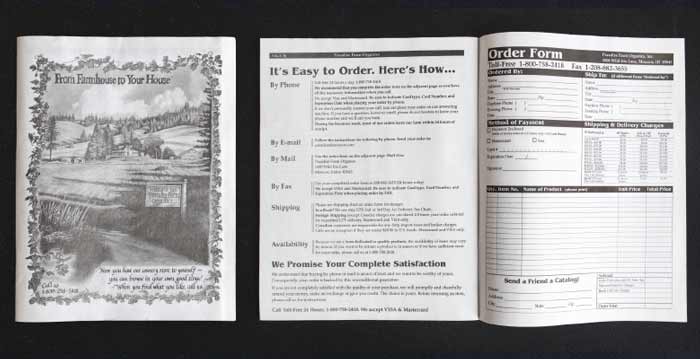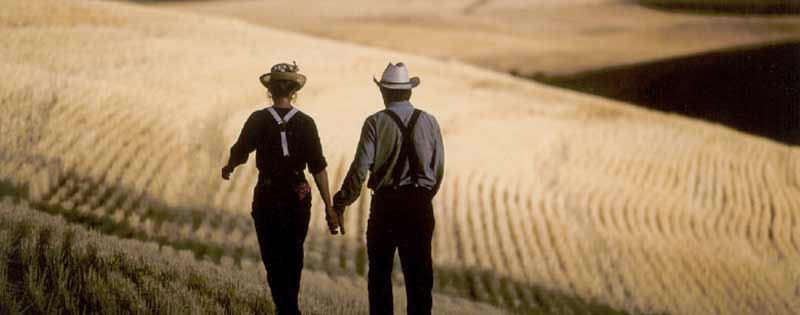My first mail-order catalog, printed on newsprint in 1994, was included in orders (few and far in between).
In other words, its “distribution channel” was word of mouth … and things like my son standing along our dirt road offering copies for sale.
No doubt, business was slow and not at all lucrative, but I had a dream, a feeling, and a passion that wouldn’t be silenced—I wanted to feed people. My husband, Nick Ogle (we’d been married almost a year), grew up farming the land that surrounded mine. For several months, I’d attributed the anonymous wildflower bouquets left on my porch to a couple in town who stopped by to hike the ridge behind my farm. Once I’d figured out that my neighbor, Nick, was my wildflower florist, we got dreamy-eyed together. He wanted to feed people also.
Even more so, I wanted to help people value good food, food that wasn’t denatured, food that was nourishing. I wanted it to be an important part of not just my life’s mission, but also theirs, a joint venture. Hand-in-hand with the people we fed, I wanted it to be our collective commitment to good in the world.
We started out by selling vegetables every Saturday morning during the summer months at our local farmers’ market.
In 1996, using a newly-acquired bulk-mailing permit, I mailed out 1,000 mail-order catalogs sporting a new look and twice the number of pages.

Later that night, we lost my 1890 farmhouse in a fire. It was 10 below zero outside, so we’d been banking the stove with wood we’d harvested from our orchard. Wary of the old brick chimney that came with the house when I bought it, I’d installed a fancy, new, insulated metal chimney, but when the accumulated soot in it caught fire, the metal got hot enough to start the tinder-dry wood that surrounded it in the attic on fire. When I ran to my daughter’s bedroom, she was still asleep, and her ceiling was on fire. Once we’d delivered the children outside to safety, I said to the heavens, “You can take 100 homes, as long as I get my children.” Our food business and most everything in it was destroyed. Earlier that day, Nick had given me a dozen red roses to celebrate the launch of my new catalog that I’d worked so hard on (back then, cut and paste was actually scissors and glue). In the aftermath of the fire, those roses—in a vase carried out by a firefighter—stood frozen in the front yard, a reminder that life can become hard in a moment’s notice.
By 2001, the food “magalog” I’d printed in 1993 under the name Paradise Farm and then Paradise Farm Organics, Inc. in 1996 evolved into my self-published magazine, MaryJanesFarm, still a growing endeavor today.
In keeping with the spirit of a traditional, diversified farm–if the hay crop doesn’t bring in money, perhaps the potatoes will–I’ve written how-to books for everything from camping, to owning a backyard milk cow, to cooking with cast iron, to baking authentic sourdough bread. In 2004, I turned my farm into a bed-and-breakfast destination. Along the way, I invented a line of quick-prep Budget Mix baking mixes.
My MaryJanesFarm Outpost line of instant and quick-prep meals is my organic solution to the industrial-grade backpacking foods that were available when I started backpacking. I thought, “Why eat unnatural food in natural places?”
On March 14, 2008, I was awarded the Cecil D. Andrus Leadership Award for Sustainability and Conservation in person by “Cece” himself: “MaryJane Butters exemplifies the best of rural America—tireless commitment to stewardship of the land and community, relentless entrepreneurial drive that recognizes no barriers, and boundless creativity and can-do spirit that inspires all who meet her and buy her products.”

MaryJane and Nick (National Geographic, December 1995, Jim Richardson)